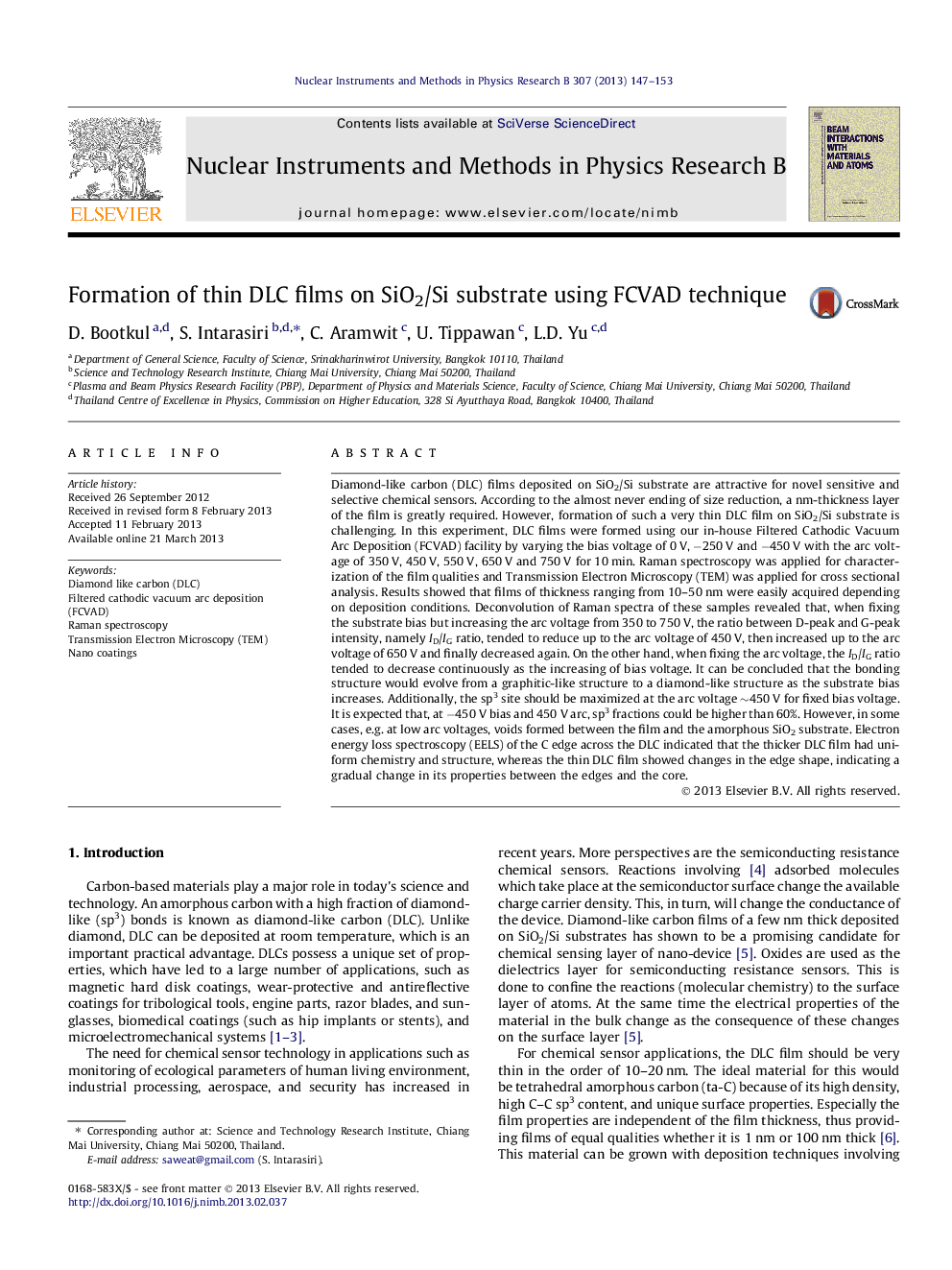| Article ID | Journal | Published Year | Pages | File Type |
|---|---|---|---|---|
| 1681976 | Nuclear Instruments and Methods in Physics Research Section B: Beam Interactions with Materials and Atoms | 2013 | 7 Pages |
Diamond-like carbon (DLC) films deposited on SiO2/Si substrate are attractive for novel sensitive and selective chemical sensors. According to the almost never ending of size reduction, a nm-thickness layer of the film is greatly required. However, formation of such a very thin DLC film on SiO2/Si substrate is challenging. In this experiment, DLC films were formed using our in-house Filtered Cathodic Vacuum Arc Deposition (FCVAD) facility by varying the bias voltage of 0 V, −250 V and −450 V with the arc voltage of 350 V, 450 V, 550 V, 650 V and 750 V for 10 min. Raman spectroscopy was applied for characterization of the film qualities and Transmission Electron Microscopy (TEM) was applied for cross sectional analysis. Results showed that films of thickness ranging from 10–50 nm were easily acquired depending on deposition conditions. Deconvolution of Raman spectra of these samples revealed that, when fixing the substrate bias but increasing the arc voltage from 350 to 750 V, the ratio between D-peak and G-peak intensity, namely ID/IG ratio, tended to reduce up to the arc voltage of 450 V, then increased up to the arc voltage of 650 V and finally decreased again. On the other hand, when fixing the arc voltage, the ID/IG ratio tended to decrease continuously as the increasing of bias voltage. It can be concluded that the bonding structure would evolve from a graphitic-like structure to a diamond-like structure as the substrate bias increases. Additionally, the sp3 site should be maximized at the arc voltage ∼450 V for fixed bias voltage. It is expected that, at −450 V bias and 450 V arc, sp3 fractions could be higher than 60%. However, in some cases, e.g. at low arc voltages, voids formed between the film and the amorphous SiO2 substrate. Electron energy loss spectroscopy (EELS) of the C edge across the DLC indicated that the thicker DLC film had uniform chemistry and structure, whereas the thin DLC film showed changes in the edge shape, indicating a gradual change in its properties between the edges and the core.
